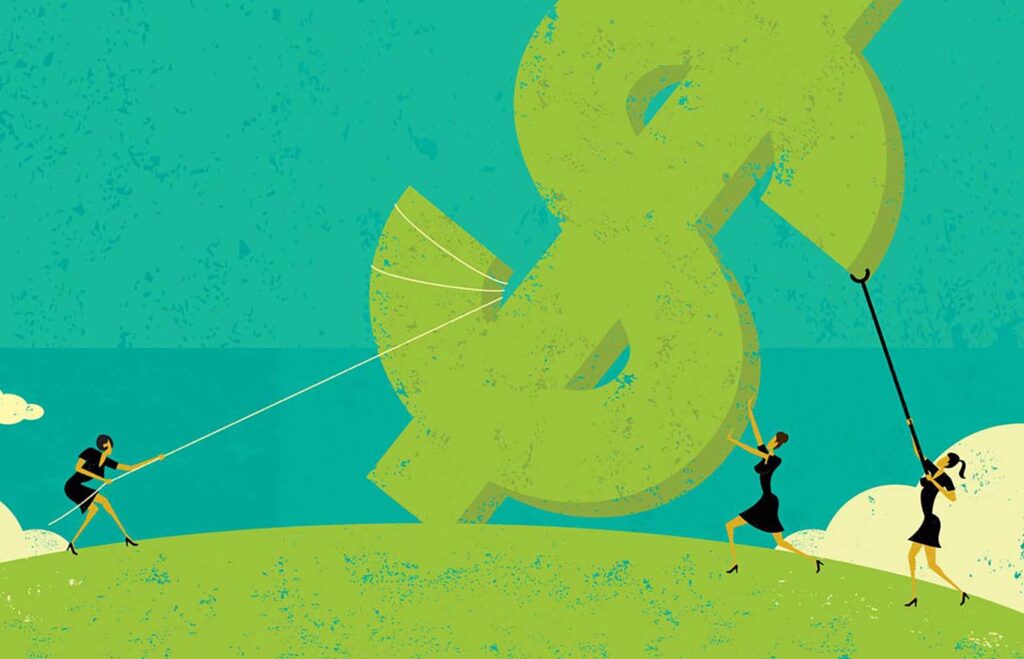When Brian Halligan and Dharmesh Shah found HubSpot in 2004, they were looking to address a key challenge facing marketers.
Traditional advertising wasn’t working. A shift was in the air. The pair noticed customers wanted answers to their questions prior to making purchases. Most went online to do that.
What customers didn’t want was for marketers to push product ads many customers didn’t care for.
It was this pain point that gave birth to HubSpot, a SaaS business that helps clients with inbound marketing, sales, and customer service challenges through a vast range of products.
HubSpot’s current market cap is $18 billion. But what’s behind this SaaS business’s tremendous growth over the past 16 years?
The answer lies in its recurring revenue product lines. From software that measures marketing campaigns to blog optimization, HubSpot offers five core products on a subscription-based model: HubSpot CRM, Marketing Hub, Sales Hub, Service Hub, and CMS Hub.
This begs the question: when’s the right time to launch a new recurring revenue product in an effort to bring in more customers while catering to the needs of your current ones?
One way of looking at this question is through a reimagined take on the tortoise and the hare fable. But in this version of the race, no one loses. Just two glorious creatures going at their own pace.
HubSpot is definitely a hare in this story, launching several core recurring revenue products since its inception.
Other SaaS businesses march to the beat of a different drum.
Going the way of the tortoise
Peter Gassner is a strategic thinker known for keeping an eye on the long term.
I’m more concerned about where Veeva will be five years from now,” he once noted while speaking with Forbes.
Gassner is the co-founder and CEO of Veeva Systems, a SaaS business that provides solutions to clients in the life sciences and pharmaceutical industries.
The business—which has a market cap of $40 billion—was launched in 2007. But it wasn’t until 2012 that Veeva launched what would end up being its most successful product line to date, Vault. At first, Vault didn’t overlap much with the company’s initial core product, CRM. And with time, the chasm between the two products grew.
Fast forward to today and Vault is Veeva’s leading product, having outgrown CRM. Veeva is an example of a business that scaled its initial recurring revenue product with success, and it subsequently launched an even more fruitful new recurring revenue product to its line.
For Veeva, the steady pace makes sense. The SaaS business is known for selling its eight-figure deals to a more niche audience and to a smaller number of customers. And it builds products that don’t add just 10 to 20% in revenue; instead, Gassner looks for recurring revenue product lines that produce 100%+ of an existing product revenue.
This is how you move the needle on your bottom line, Gassner argues, and his business’s voracious growth is proof of that. Rather than building multiple, smaller add-on products, build something that’s bolder and demands more attention.
That’s the Veeva way.
The mergers and acquisitions route
Large companies often use mergers and acquisitions to create new product lines. Twilio—a cloud-communication platform—has spent more than $6.1 billion on acquisitions. Its latest one, Segment, is another application programming interface (API) intermediary software that allows two apps to talk to each other.
Meanwhile, Salesforce—the customer-relationship management software—created Chatter to own a business communications platform. But it never took off quite like Slack, a more ubiquitous business communications platform.
Salesforce did the next best thing and acquired Slack for a whopping $27 billion. With Slack, Salesforce now has the interface to everything, according to Salesforce CEO Marc Benioff.
Meanwhile, Docebo—a learning-management SaaS business—recently acquired forMetris, which provides employers with questionnaire tools to help employees gather new skills. It’s another recurring revenue product line Docebo has under its belt.
Docebo’s current market cap is more than $2 billion.
Points to think about prior to launching your next recurring revenue product
- Consider missed pain points before you launch a second recurring revenue product. What is your first product not addressing in terms of your customers’ needs? This works as a great launching pad to see whether a second recurring revenue product is needed.
- Get insights from your target audience. While it’s important to speak to stakeholders within the company, your customer can offer a wealth of information that could be missed if you only speak to members of your sales and marketing teams. One expert recommends speaking to 10 of your current customers and 10 potential customers.
- A second product isn’t a solution to lackluster sales. Rather than seeing it as an excuse to assuage your losses, think of your second product as an enabler of sales.
Henrique Dubugras is the founder and co-CEO of Brex, an OS for growing companies in the financial services industry. Dubugras argues it’s best that your new product isn’t completely disparate from your first.
If you build a completely separate product that doesn’t help your initial product, it’s harder. But if there’s a virtuous loop, when the first product helps the second one and the second one helps the first one, it can actually make both of them more powerful instead of competing with each other,” he said in 2019.
Why recurring revenue matters
As illustrated earlier with examples such as HubSpot, Veeva, and Salesforce, certain SaaS businesses are successful not only because of their new product lines, but also because these product lines create additional recurring revenue.
Why is this important?
One of the reasons why these businesses have such high valuations is due to their recurring revenue product lines. This benefits the business in many ways, including access to more investor money, more leverage during mergers or acquisitions negotiations, and greater heft in determining the resale value of the company.
Adding recurring revenue based on subscriptions to your product or service may increase your company’s valuation by up to eight times that of a comparable business with little recurring revenue, says John Warrillow, designer of the Value Builder System for business.
The more guaranteed revenue you can offer a potential acquirer, the more valuable your business is going to be,” Warrillow says.








